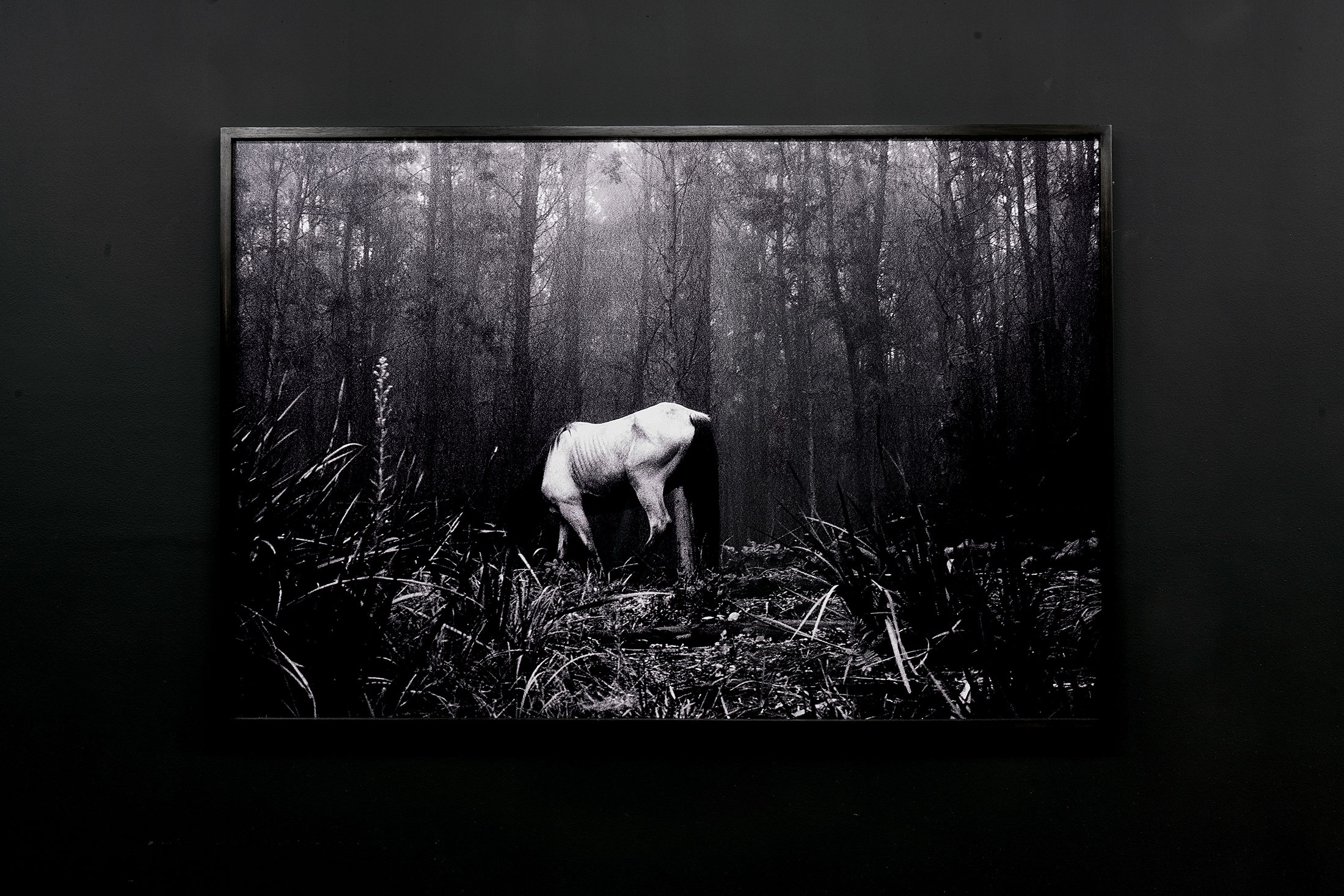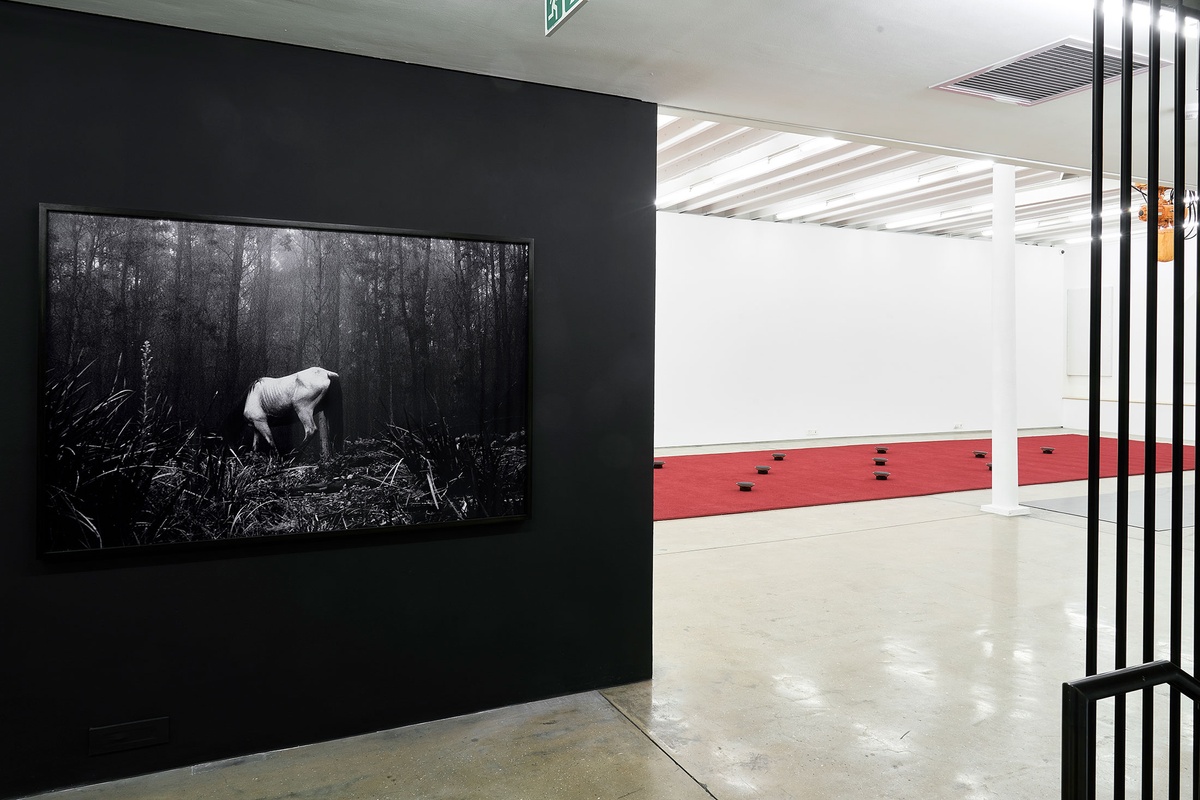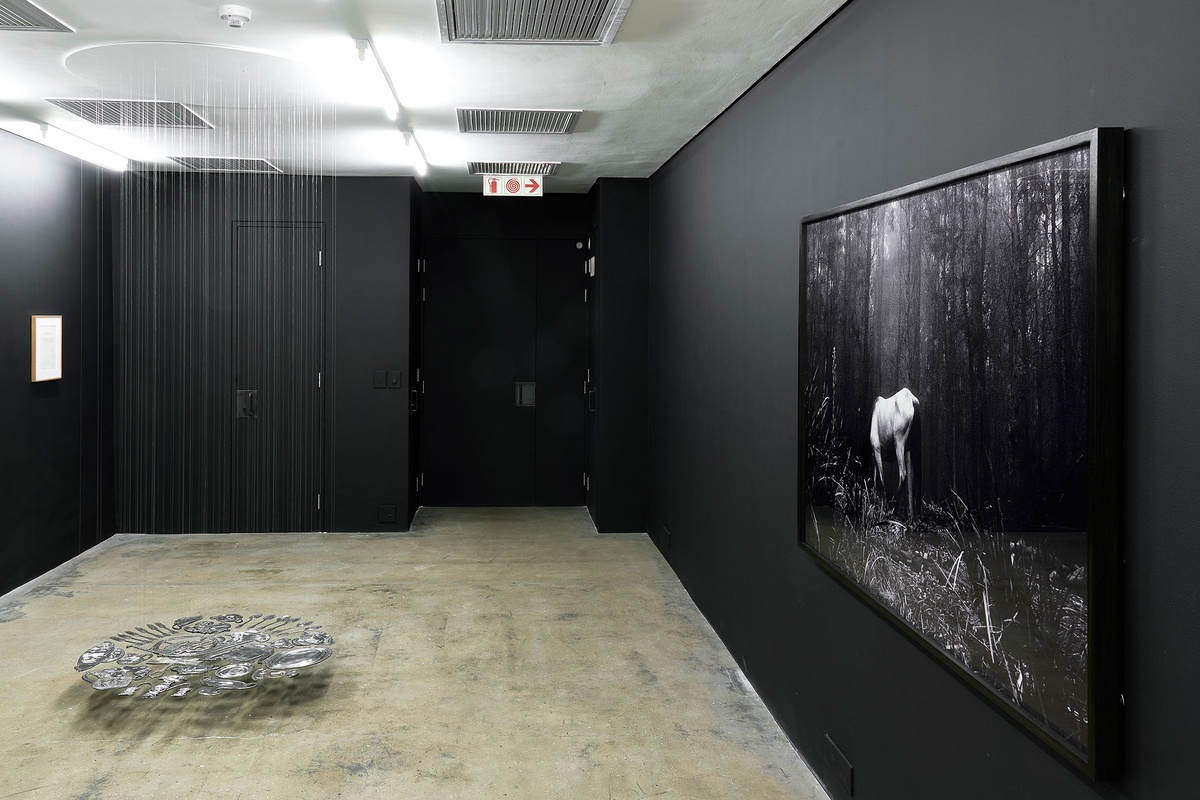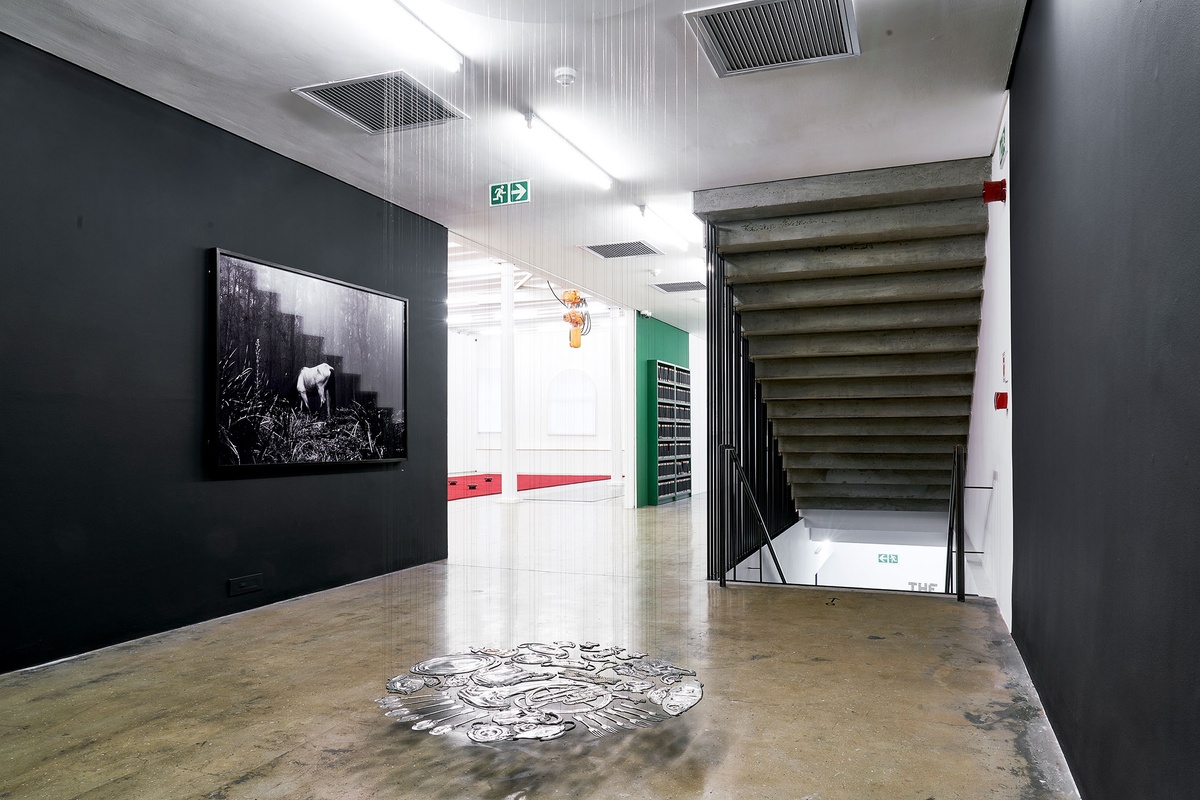Santu Mofokeng

Included in the photo-essay Chasing Shadows, Buddhist retreat near Ixopo continues Mofokeng’s reflections on the “gossamer world” of spirituality in places and practices of ritual significance. The essay’s first images were made on Good Friday in 1996, when Mofokeng travelled to Motouleng Cave, a site sacred to the Zionist Apostolic Faith. These initial scenes proposed the themes of ritual embedded in landscape – and memory embedded in ritual – which continued to shape much of Mofokeng’s practice in the proceeding decades. The shadows to which the title refers gesture not only to the absence of light, but borrow from the Sesotho articulation of the word – seriti – which extends shadow's definition from physical manifestations to include invocations of aura, presence, and sympathetic magic. As to the success of such gnostic pursuits, Mofokeng later reflected: “Perhaps, I was looking for something that refuses to be photographed. I was only chasing shadows.”
b.1956, Soweto; d.2020, Johannesburg
“I am interested in the ambiguity of things,” the late photographer Santu Mofokeng wrote. “This comes not from a position of power, but of helplessness.” In many of his pictures, this ambiguity appears as a spreading opacity, a diaphanous pall of rising smoke, mist or dust. Mofokeng grew up, he wrote in his photo-essay Chasing Shadows (1996–2006), “on the threshing floor of faith…and while I feel reluctant to partake in this gossamer world, I can identify with it.” An agnostic observer attuned to the spiritual lives of others, the pervasive haze that softens so many of his pictures more often takes on a poetic significance. There is to all Mofokeng’s works a distinct quietude – the artist looking not to political drama but to life’s minutiae, those “things I ordinarily do or see.” The tumult of the times, Mofokeng believed, need not be made explicit in photographs. Rather, he suggested, “the violence is in the knowing,” latent in the very places and people he pictured. “His voice, his awareness of where he was in space and history, his ability to think around what he was doing,” Joshua Chuang said of the artist in conversation with Sean O’Toole at A4, “wasn’t predictable but open and raw and simultaneously hidden.”



